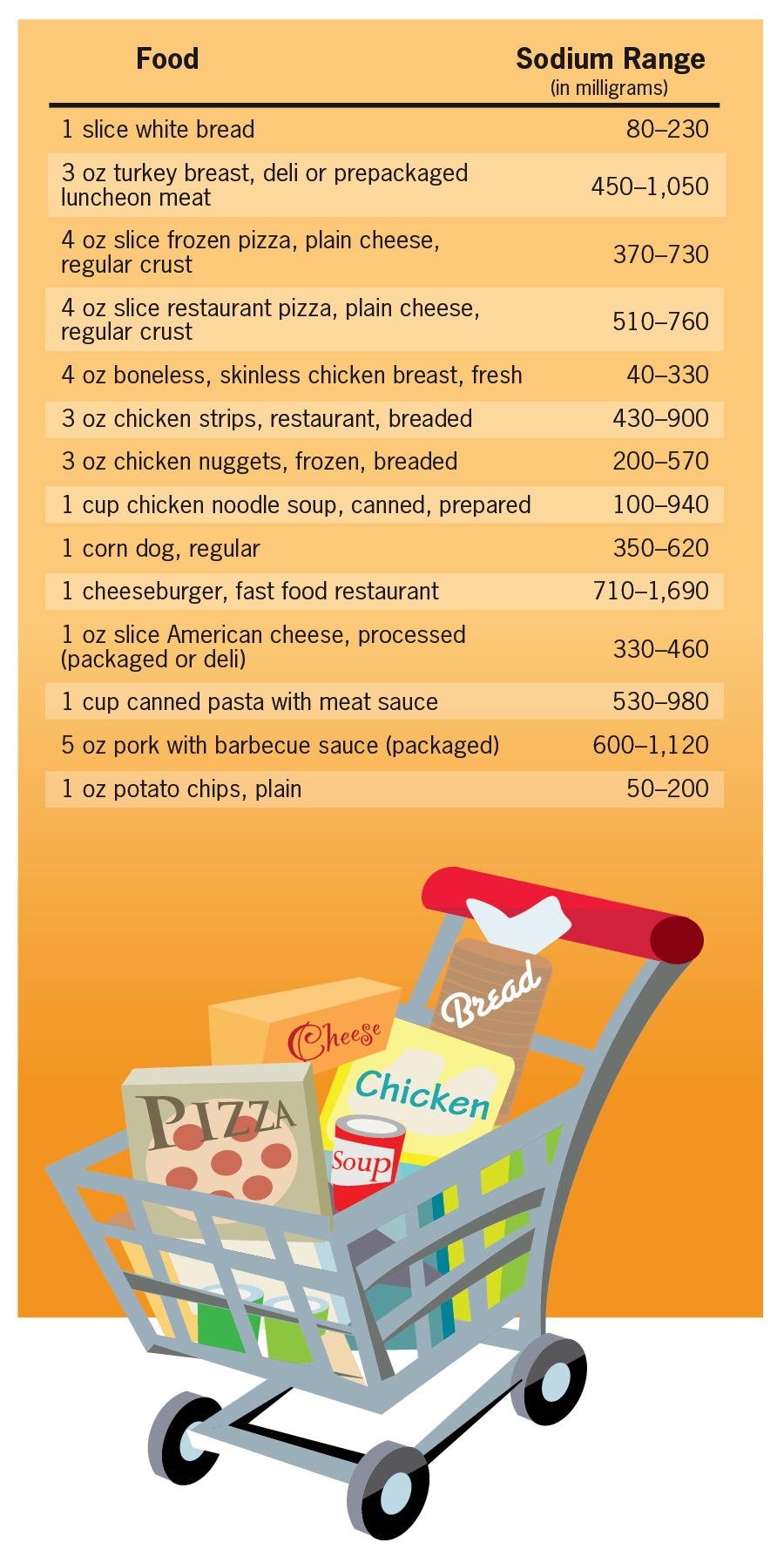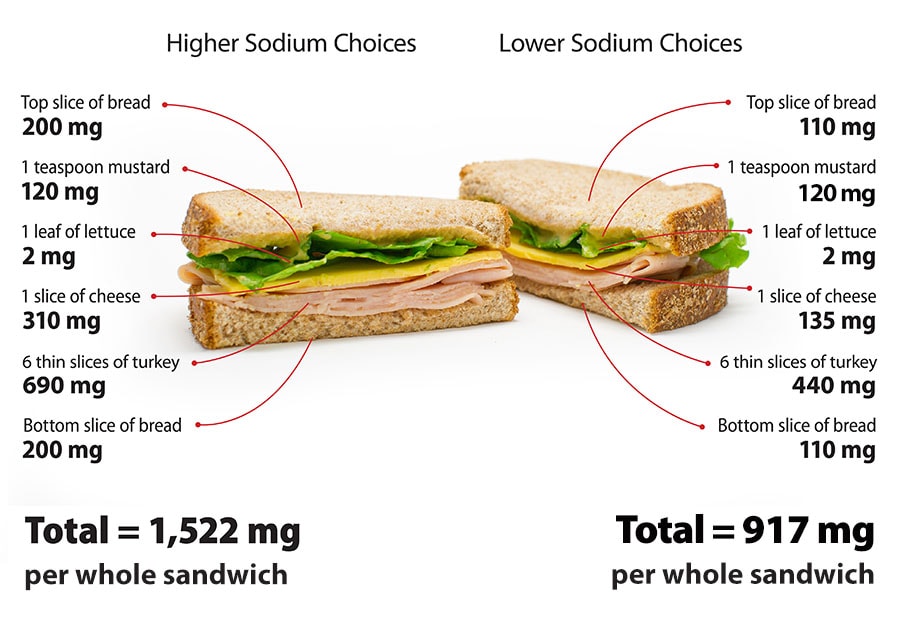How to Reduce Sodium Intake
The majority of sodium in our diets comes from packaged and restaurant food (not the salt shaker) as a result of food processing. Even foods that may not taste salty can be major sources of sodium. Foods with only moderate amounts of sodium, such as bread, can be major sources of sodium because they’re eaten so frequently.
Tips for Reducing Sodium Intake
At the Grocery Store
- Buy fresh, frozen, or canned vegetables with no salt or sauce added.
- Choose packaged foods labeled “low sodium,” “reduced sodium,” or “no salt added” when available.
- Compare the amount of sodium in different products by reading Nutrition Facts labels. Choose the options with the lowest amounts of sodium.
- When buying prepared meals, look for those with less than 600 milligrams (mg) of sodium per meal, which is the upper limit set by the Food and Drug Administration for a meal or main dish to be labeled “healthy.”
- Check the amount of sodium per serving, and don’t forget to check the number of servings per container.
- When possible, purchase fresh poultry, fish, pork, and lean meat, rather than cured, salted, smoked, and other processed meats. For fresh items, check to see whether saline or salt solution has been added—if so, choose another brand.
- Ask your grocer if they have a low sodium shopping list available.
- Ask to speak to the registered dietitian at your local grocery store to learn more about buying low sodium products. If your grocer doesn’t have a registered dietitian, ask your doctor for a referral. A registered dietitian can provide valuable guidance on reducing your family’s sodium intake and managing blood pressure
At Home
- When cooking, use alternatives to replace or reduce the amount of salt you use, such as garlic, citrus juice, salt-free seasonings, or spices.
- Prepare rice, pasta, beans, and meats from their most basic forms (dry and fresh) when possible.
- Eat more fruits and vegetables.
- Limit sauces, mixes, and instant products, including flavored rice and ready-made pasta.
Dining Out
- Ask for nutrition information before you order, and select a lower sodium meal.
- Ask that no salt be added to your meal.
- Order vegetables with no salt added or fruit as a side item.
- Split a meal with a friend or family member.
- Keep takeout and fast food to an occasional treat.
Choose a Heart-Healthy Diet
The Dietary Approaches to Stop Hypertension (DASH) eating plan is a simple, heart-healthy diet that can help prevent or lower high blood pressure. The DASH diet is low in sodium, cholesterol, and saturated and total fats, and high in fruits and vegetables, fiber, potassium, and low-fat dairy products.
If you follow the DASH eating plan and also make other healthy lifestyle changes, such as getting more physical activity, you will see the biggest benefits. Learn more about the DASH eating plan.

Values rounded to the nearest 10 mg.
Source: U.S. Department of Agriculture, Agricultural Research Service. National Nutrient Database for Standard Reference.

